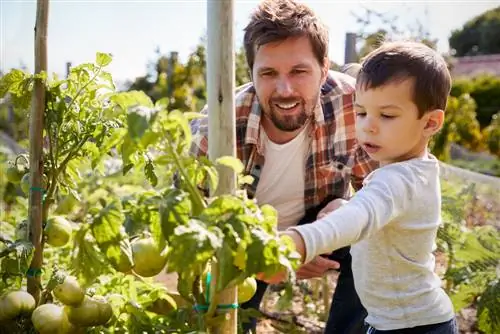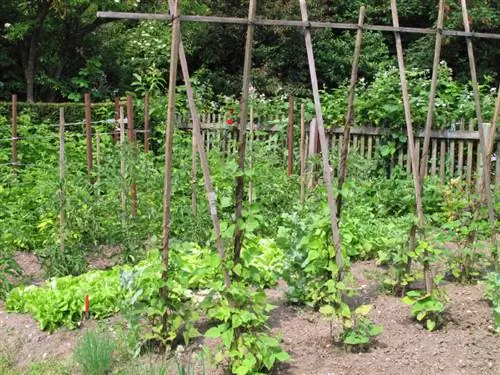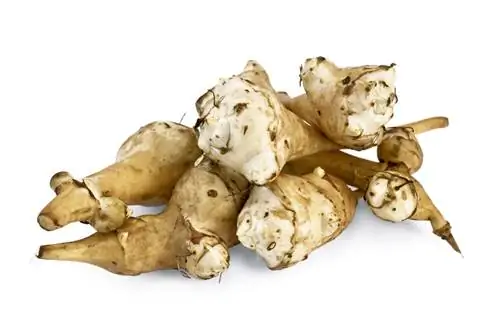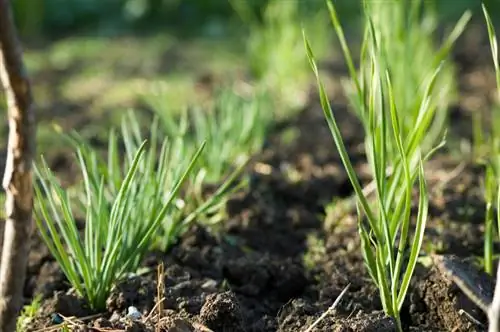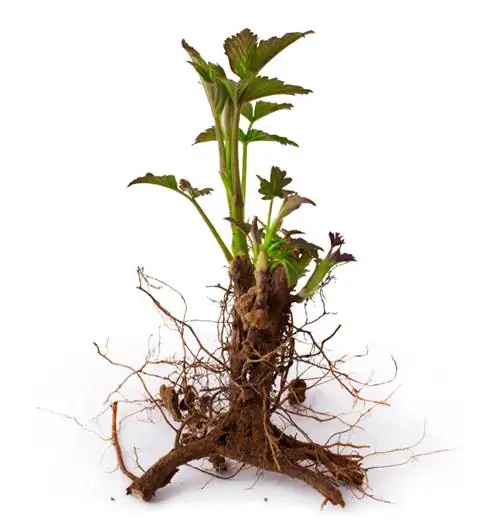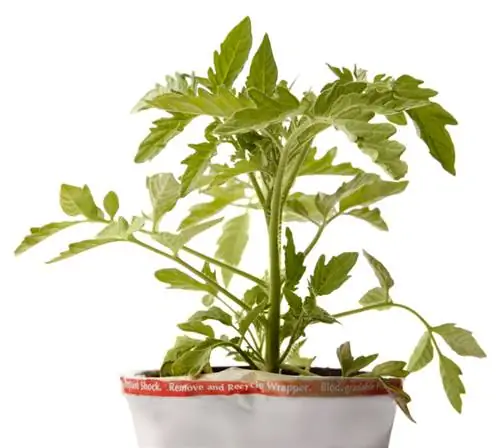- Author admin [email protected].
- Public 2023-12-16 16:46.
- Last modified 2025-01-23 11:22.
The tomato came to Europe from South America in the 16th century. Since then it has been on a wave of success, as hardly any other vegetable is grown so often. This is understandable, because although the nightshade plant has special requirements, cultivation is easy.

How can tomatoes be cultivated correctly?
In order to successfully cultivate tomatoes, it is important to have soil rich in humus and nutrients, sufficient sunlight, protection from wind and rain, and good drainage. Tomato plants also need supports such as stakes or scaffolding to ensure optimal growing conditions.
What tomatoes need
Tomato plants like humus- and nutrient-rich substrates with a permeable structure. Work compost into the soil before planting to ensure a basic supply of nutrients. A little sand ensures better water drainage and prevents waterlogging, to which the plants are sensitive.
Location Requirements:
- protected from wind and rain
- ideally covered
- warm and sunny
- in buckets with a capacity of ten liters
- Rods serve as support
Planting tomatoes
Prick out your tomatoes and let the plants grow in the new pot for about a month. After the ice saints, place the planters in a protected location so that the nightshade plants get used to the outdoor climate. At night they migrate back to their usual location. The culture can be planted in the bed from the end of May. Planting in the greenhouse is possible from the beginning of May.
Procedure
Dig planting holes whose volume is slightly larger than that of the root balls. Insert the plants and fill the hole with the excavated soil. Thorough watering closes gaps in the substrate so that the roots come into contact with the soil.
Ensure sufficient protection and stability
Special perforated films (€12.00 at Amazon) from the garden center are placed over the entire plants, gathered over them and tied to a stick. Since a humid microclimate develops under this hood, you should choose a more airy alternative. Foil tents offer optimal ventilation.
Support
If the plant is full of tomatoes, the shoots bend downwards. To avoid diseases and to provide plants with better lighting conditions, you should direct them away from the ground. After planting, insert sticks or a bamboo frame between the plants to which you can later tie the shoots. There are spiral-shaped metal rods available commercially, which provide sufficient stability.

